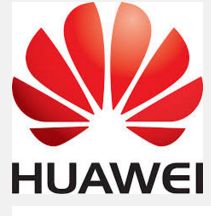At the Huawei Global Analyst Summit 2016, Huawei’s  Rotating CEO Eric Xu introduced the company’s “All Cloud” strategy to attendees. Designed based on insights into industry trends, the strategy highlights Huawei’s perseverance in enabling customer success, showcases its understanding on improving the end user experience, and reflects its commitment to carrying out continuous innovation and promoting industry development. Huawei is committed to becoming an advocate, promoter, and leader of the full cloudification of products and solutions, as well as helping customers achieve business success over the next two to three years.
Rotating CEO Eric Xu introduced the company’s “All Cloud” strategy to attendees. Designed based on insights into industry trends, the strategy highlights Huawei’s perseverance in enabling customer success, showcases its understanding on improving the end user experience, and reflects its commitment to carrying out continuous innovation and promoting industry development. Huawei is committed to becoming an advocate, promoter, and leader of the full cloudification of products and solutions, as well as helping customers achieve business success over the next two to three years.
Eric Xu commented at the summit, “In the All IP era, we proposed our Single strategy, which effectively supported the development of operator customers. Nowadays, as we face the digital transformation of different industries, we advocate full cloudification to build efficient networks and agile competitiveness. At the Huawei Global Analyst Summit 2015, we proposed the Real-time, On-demand, All-online, DIY, and Social (ROADS) experience model to define the features of a superior user experience. This year, we have introduced the “All Cloud” strategy, which focuses on delivering a ROADS experience. A ROADS experience cannot be achieved without support from services, networks, and operations systems. Driven by end users’ needs for a better experience, Huawei proactively advocates the “All Cloud” strategy, promotes network modernization, and works to enable digital transformation across industries, thus meeting end user needs to enable customer success.”
At the core of Huawei’s “All Cloud” strategy is the full reconstruction of infrastructure networks in four respects – equipment, network, services, and operations. The strategy aims to create systematic strengths in pooled hardware resources, fully distributed software architecture, and full automation. According to the strategy, the entire network will shift to data center-centric architecture, and all network functions, services and applications will run in the cloud data center (DC). Huawei has invested heavily in cloud DC infrastructure (including computing, storage, and DC switching hardware), FusionSphere – a cloud operating system, FusionInsight – a Big Data platform, and FusionStage – distributed PaaS. Through its unified and open architecture, Huawei will be able to meet customers’ needs for business transformation under various scenarios such as the public cloud, private cloud, industry cloud, and hybrid cloud. Regarding the cloudification of equipment, Eric Xu stressed, “Network Functions Virtualization (NFV) standardizes and virtualizes equipment and hardware on ICT networks. However, even with NFV, we still adopt a traditional method for managing the software architecture and operations model. If we can move another step forward and use the cloudification concept to make network software fully distributed and automated, we can realize Network Functions Cloudification (NFC).” Huawei is committed to applying cloud technologies to each and every network infrastructure domain.
Staying customer-centric and enabling customer success are the cornerstone of all Huawei’s strategies. Furthermore, Huawei has defined the development strategies for its three major customer groups.
In the carrier business, Huawei will aim to deliver the ROADS experience, realize end-to-end network coordination and orchestration, and achieve full cloudification. Specifically, Huawei will seize new business opportunities by developing cloud-based Internet of Things (IoT), video services, and cloud service platforms. Huawei will also promote the cloudification of operations systems, which is important to help operators establish their advantages in agile operations. In addition, Huawei will leverage software-defined networking (SDN) and NFC to accelerate the cloudification of network infrastructure and IT infrastructure, and improve automation, flexibility, and scalability.
In the enterprise business, Huawei will leverage cloud computing, SDN, and Big Data technologies to facilitate enterprise digitalization towards agile and smart operations. To this end, Huawei will take actions in three aspects. First, Huawei will need to encourage enterprises to move their IT systems to the cloud to fully utilize resources and improve efficiency. Second, Huawei will accelerate the pace of transforming enterprise networks into SDN, and then use a unified SDN controller to centrally integrate telecom, enterprise, and DC networks and achieve agile operations throughout the entire process. Third, Huawei will enable smart enterprises with Big Data.
In the consumer business, what matters most for sustained growth are the brand, quality, user experience, and ecosystems. In this era of surplus economy, the essence of competition is quality. No company can succeed unless it establishes a high-quality brand image in the eyes of customers. Service is another critical success factor. Huawei will step up its efforts to build a global service system and core service capabilities, and develop user services as the Consumer BG’s unique competitive advantage. Last but not least, Huawei will focus its future investment and development efforts on building an ecosystem centered on the consumer experience. The ecosystem will help aggregate the best resources across the industry and deliver an inspired experience to device users.
“All Cloud” is a process through which the ICT industry becomes increasingly open. Achieving this requires the close collaboration of all industry players. To date, Huawei has established more than 10 open labs worldwide for joint innovation and rapid commercial deployment of services. In addition, Huawei has pioneered the establishment of the Open ROADS Community for sharing best practices and reaching a consensus with the industry and facilitating operations transformation. Huawei is committed to openness, collaboration, and shared success with commercial cooperation at the core and technical cooperation and talent development in a supporting role. The company will continue to work with its partners to create a thriving cloud ecosystem.





